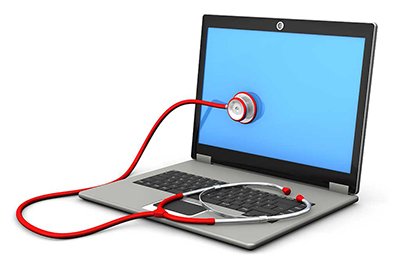Encountering issues with your computer can be frustrating, but many problems are manageable with the right troubleshooting steps. Whether your computer is running slowly, crashing unexpectedly, or exhibiting other issues, this guide will walk you through how to troubleshoot common computer issues effectively. With these practical tips, you’ll be able to diagnose and fix problems with confidence.
Slow Computer Performance
A slow computer can hinder your productivity and cause unnecessary stress. Fortunately, there are several steps you can take to speed things up.
Check for Background Programs
One common reason for a sluggish computer is having too many programs running in the background. To identify and close these programs, open Task Manager on Windows by pressing Ctrl + Shift + Esc. On a Mac, use Activity Monitor found in Applications > Utilities. End any processes that are consuming a lot of resources but are not essential.
Clean Up Your Hard Drive
Another potential culprit is a cluttered hard drive. Use the built-in Disk Cleanup tool on Windows or the Optimize Storage feature on macOS to remove temporary files and unnecessary data. Additionally, uninstall programs you no longer use to free up space.

Frequent Crashes or Freezes
If your computer crashes or freezes frequently, it can be a sign of underlying issues. Here’s how to address these problems.
Check for Overheating
Overheating can cause your computer to crash. Ensure that your computer’s fans are working properly and that vents are not obstructed. Consider using a can of compressed air to remove dust from internal components, which can improve airflow and cooling.
Update Drivers and Software
Outdated drivers or software can also lead to crashes. Check for updates for your operating system, drivers, and any installed applications. On Windows, you can use Device Manager to update drivers, while macOS updates can be found in System Preferences under Software Update.
Internet Connectivity Problems
Internet issues can disrupt your work and entertainment. If you’re experiencing connectivity problems, follow these troubleshooting steps.
Restart Your Router and Modem
Sometimes, simply restarting your router and modem can resolve connectivity issues. Unplug both devices, wait about 30 seconds, then plug them back in. Allow them to fully restart and try reconnecting to the internet.
Check Network Settings
Ensure that your computer’s network settings are configured correctly. On Windows, go to Settings > Network & Internet and troubleshoot the connection. On macOS, open System Preferences > Network, select your network, and click on Advanced to check settings.
Printer Not Responding
If your printer isn’t responding, it can be quite frustrating, especially when you have important documents to print.
Check Printer Connections
First, ensure that all cables connecting your printer to your computer are securely plugged in. For wireless printers, verify that both your printer and computer are connected to the same Wi-Fi network.
Reinstall Printer Drivers
If the connections are fine, you might need to reinstall your printer drivers. Go to the printer manufacturer’s website, download the latest drivers for your model, and follow the installation instructions.
Error Messages and Blue Screens
Error messages and blue screens can indicate serious issues but often have straightforward fixes.
Note the Error Code
If you encounter an error message or blue screen, make a note of the error code or message. This information can help you identify the problem. A quick online search of the error code can often lead to solutions specific to the issue you’re facing.
Perform a System Restore
If the issue persists, performing a system restore can revert your computer to a previous state before the problem began. On Windows, search for System Restore in the Start menu and follow the prompts. On macOS, you can use Time Machine to restore your system.
General Maintenance Tips
Regular maintenance can help prevent many common issues and keep your computer running smoothly.
Install Antivirus Software
Protect your computer from malware and viruses by installing reputable antivirus software. Regular scans and real-time protection can prevent many performance issues and security threats.
Keep Your System Updated
Regularly update your operating system and software to ensure that you have the latest features and security patches. Updates often address bugs and compatibility issues that could lead to problems.
Conclusion
Troubleshooting common computer issues doesn’t have to be overwhelming. By systematically checking for background programs, updating software, and performing regular maintenance, you can address many problems on your own. Remember, a methodical approach to troubleshooting—whether it’s handling slow performance, connectivity issues, or printer problems—can save you time and frustration. With these tips, you’ll be better equipped to keep your computer running smoothly and efficiently.










